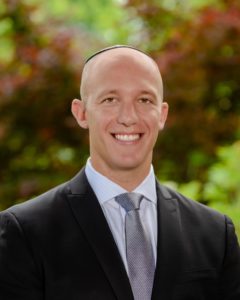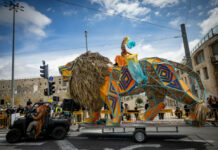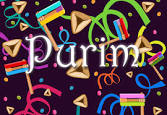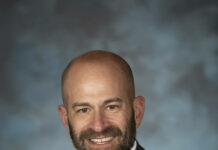
By Rabbi Jason Bonder
Many of us know exactly what to do when we see a man wearing a triangle-shaped hat — especially if we see that man in our synagogue plays on the holiday of Purim.
We boo and hiss and shake our noisemakers when we hear his name read aloud from the Megillah. Haman is that wicked man whose name we are commanded to drown out.
Fewer of us, I suspect, know that not once in the entire book of Esther is it mentioned that Haman ever wore a hat that has three corners. So, what’s the hat all about? I think I discovered the meaning of the hat all over again this past Shabbat thanks to this moment of history in which we live.
This month, at our family Shabbat services, I wanted to find a story with connections to Ukraine. Thankfully, I came across a story called “Haman and Mordecai: A True Story in Honor of Purim” written by Solomon Naumovich Rabinovich, born just outside of Kyiv, and better known by his pen name, Sholem Aleichem.
Aleichem set his Purim-themed story “in one of the Jewish cities of our old home,” and it begins with the arrival of Haman and Mordecai in that unnamed city. The biblical duo arrive in town centuries after the Purim story was first penned. Haman, who Aleichem describes as a “rich magnate, with an angry, severe glare,” is wearing his triangular hat.
Despite the iconic head covering, the Jews in this fictional town do not recognize Haman. They ask Mordecai about the rich magnate, and Mordecai explains in no uncertain terms who they are. He mentions that they are from Persia and Media, from the Fortress Shushan.
Yet each character with whom Mordecai speaks isn’t quite sure what to do. Perhaps in disbelief, perhaps in confusion, none of the town’s Jews are spurred to action despite the villain’s presence. They fail to take immediate steps toward ridding their town of this known villain. Purim, and Aleichem’s story, come to teach us that we cannot react in this way to the presence of evil. It is incumbent upon us to spot wickedness quickly and then do something in response.
This coming week, we will teach our children to get loud in all kinds of ways at the mention of Haman’s name. Haman’s triangular hat will likely make its appearance in Purim spiels across the world. But we aren’t booing that hat. The triangle hat is a teaching tool to communicate something far more important and our whimsical tradition of booing Haman is much more serious than it appears.
When we take our children to hear the Megillah, we are teaching them to build a world in which good people stand up to bullies wherever and whenever they see one. We are instructing the next generation that when we spot wickedness in our midst, we push decorum aside and we get loud until the evil plot is thwarted.
God willing, we will raise a generation of people who have even just an ounce of the courage it took for the Ukrainian soldiers on Snake Island to stare down a Russian warship and defiantly say, “Go f*** yourself!”
It is not enough to put this on the shoulders of the next generation. We, the adults in the room, need to heed our own advice. Over these past two weeks, we have watched a villainous plot unfurl. It is as if this moment in history is testing the Jewish people by asking, “Do you still need that triangular teaching tool from your childhood to spot evil?”
Vladimir Putin shouldn’t have to wear a hat that has three corners for us to recognize his wickedness. His brutal and unjust aggression should be enough to spur us to action.
Those of us who grew up attending Purim services have been training for this our whole lives. It’s time to stand up and make noise until this modern-day Haman is stopped. A good place to start is by booing Haman with the kind of passion and courage displayed by those soldiers on Snake Island.
But don’t stop there. Donate, write on social media, encourage others to do the same. May our celebration of Purim this year, and every year, be a reminder to us that not all villains wear triangular hats.
Jason Bonder is the associate rabbi at Congregation Beth Or in Maple Glen.






